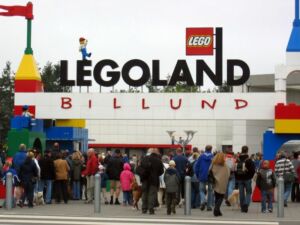News
Lego goes digital … again
This article is more than 10 years old.
Move over Minecraft, there is a new/old player on the digital block

Wonder if the overpriced food will go digital as well (photo: B Lund)
Fans of digital block-building games everywhere can once again build their digital worlds with Legos. Lego has launched its long-rumoured Lego Worlds, an open-world game in which everything will be constructed with digital Lego bricks.
Players will be able to modify pre-built worlds, or construct their own using virtual Lego sets. The vehicles, figures and creatures are based on real-life playsets, and Lego said that more building options will soon be available.
Still in test mode
Lego Worlds was launched onto the PC gaming platform Steam on Monday in ‘Early Access’ mode, which means it is unfinished and only has a fraction of the planned features available.
There is as of yet no online multiplayer mode. The multiplayer option is a major reason behind the success of the wildly popular Minecraft franchise. Developers TT Games promised that multiplayer would be available soon and said the new game would offer “endless possibilities”.
Even with its current limited options, early reviews of the Lego Worlds have been positive.
Not the first try
Lego had dabbled in online before with Lego Universe. Launched in 2010, that platform was abandoned in 2012. Gaming pundits said that Lego’s constant reviewing of user-constructed content to ensure that it was family-friendly made Lego Universe too expensive to operate.
Markus Persson, the Swedish video games developer who created Minecraft,is a confirmed Lego fan, and David Gram, Lego’s marketing director, has previously been quoted as saying he wished his company had created Minecraft, calling it “digital Lego”.
A fortune to be made in digital bricks
Lego is marketed at children but will certainly attract many adult players. Minecraft, which was bought by Microsoft last year, has managed to appeal to both adults and children and turned creative gaming into a multimillion dollar industry.
Minecraft was created by Swedish studio Mojang and released in 2011. It now has over 100 million registered users. The platform was purchased by Microsoft in 2014 for an estimated 2.5 billion US dollars.
Minecraft has faced competition in the past from titles like Roblox. The fact that Lego has partnered with Mojang in the past positions Lego World in an unusual spot as both rival and partner.










































